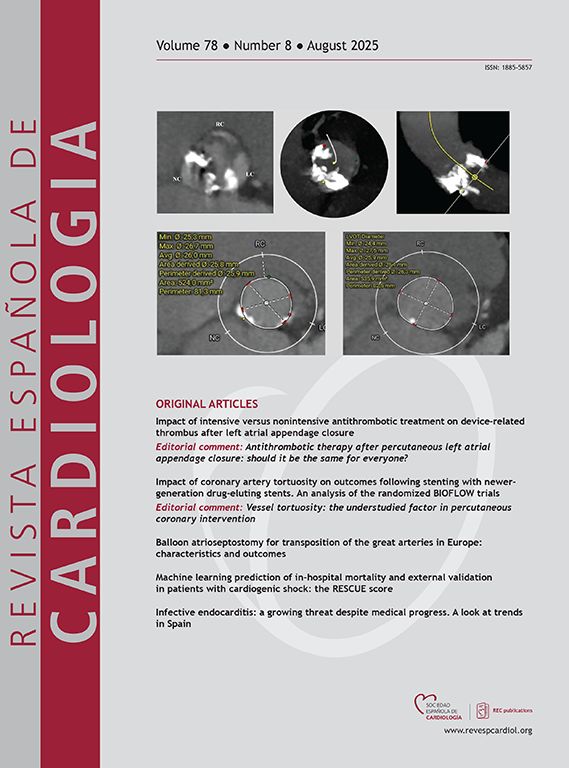
In recent years, several cases of hereditary transthyretin amyloidosis (ATTRv) due to the p.Val142Ile variant have been described in patients without African ancestry. The aim of this study was to analyze the impact of ATTRv caused by p.Val142Ile in Spain, focusing on its phenotypic characteristics and its population frequency.
MethodsPatients diagnosed with ATTRv caused by p.Val142Ile, as well as carriers irrespective of their phenotype, were recruited from 16 centers in Spain. Baseline characteristics and events during follow-up were retrieved. Population frequency was assessed using data from the Spanish National DNA Bank (N=3569) and the Catalan Health Databank (N=790).
ResultsThe cohort included 164 participants: 75 probands (45.7%) and 89 relatives (54.3%). Among the probands, the mean age was 73.9±8.5 years, and 47 (62.7%) were male. Sixty-seven probands (89.3%) reported European ancestry, while only 6 (8%) reported African ancestry. Cardiac symptoms were the most frequent reason for ATTRv diagnosis (n=64; 85.3%). The median follow-up was 2.6 years [Interquartile range, 1.5-4.1]. Overall penetrance at ages 65, 75, and 85 years was 12.8%, 44.3%, and 94.2%, respectively. Tafamidis was initiated during follow-up in 38 patients: after 1 year of treatment, 14 patients (38.9%) met the combined endpoint (12 experienced disease progression and 2 died from cardiovascular causes). Population frequency was estimated to range between 0.0% and 0.12%, based on data from the Spanish and Catalan databases, respectively.
ConclusionsATTRv caused by p.Val142Ile has a significant prevalence in Spain. Its phenotypic features are characterized by late onset, male predominance, and cardiac involvement.
Keywords
Identify yourself
Not yet a subscriber to the journal?
Purchase access to the article
By purchasing the article, the PDF of the same can be downloaded
Price: 19,34 €
Phone for incidents
Monday to Friday from 9am to 6pm (GMT+1) except for the months of July and August, which will be from 9am to 3pm








